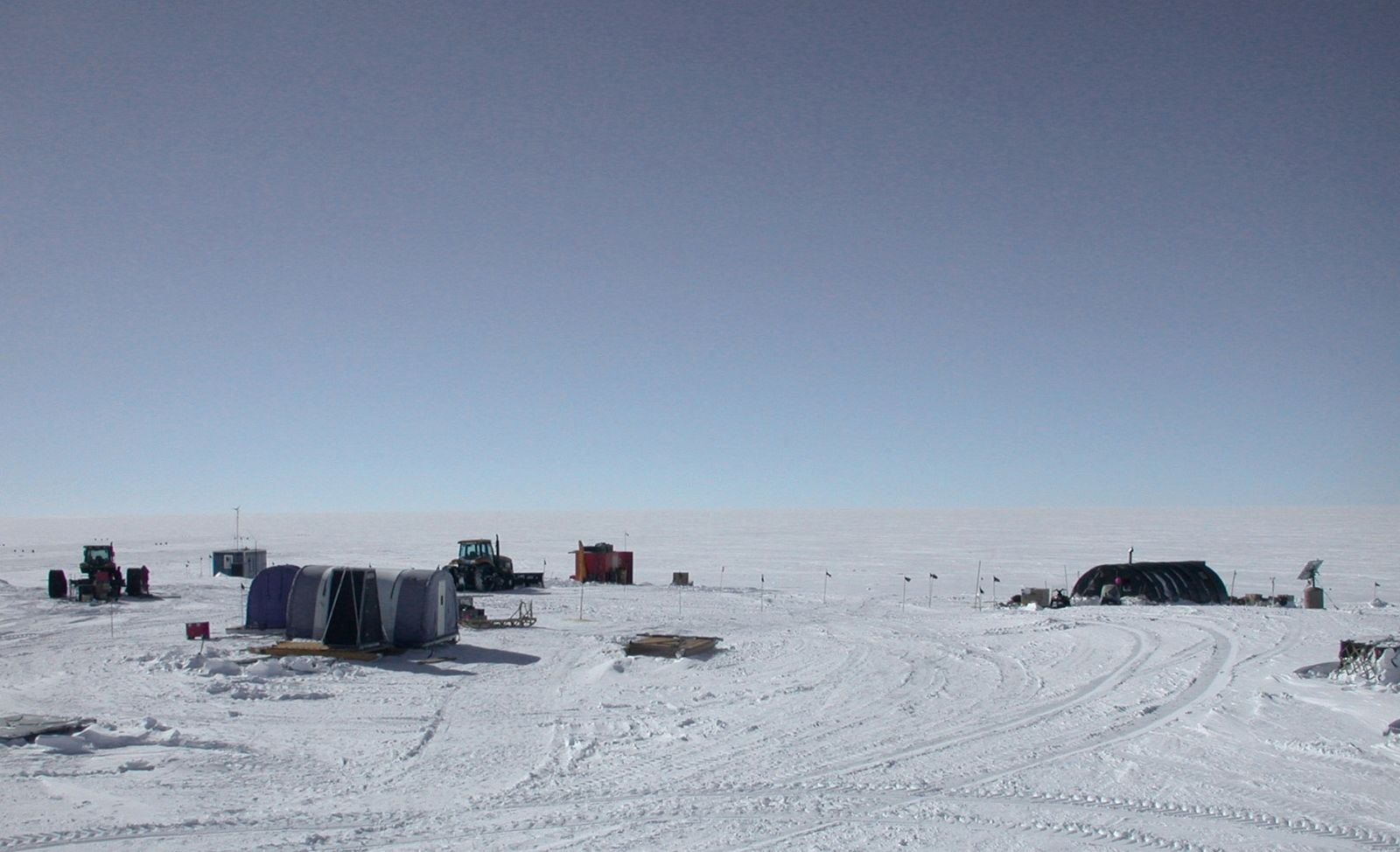Difference between revisions of "Template:POTD protected"
Westarctica (talk | contribs) |
Westarctica (talk | contribs) |
||
| Line 1: | Line 1: | ||
{| role="presentation" style="margin:0 3px 3px; width:100%; text-align:left; background-color:transparent; border-collapse: collapse; " | {| role="presentation" style="margin:0 3px 3px; width:100%; text-align:left; background-color:transparent; border-collapse: collapse; " | ||
|style="padding:0 0.9em 0 0;" | [[File: | |style="padding:0 0.9em 0 0;" | [[File:Byrd field camp.jpg|300px]] | ||
|style="padding:0 6px 0 0"| | |style="padding:0 6px 0 0"| | ||
'''[[ | '''[[Byrd Station]]''' is a former research station established by the United States during the International Geophysical Year by the [[U.S. Navy]] during Operation Deep Freeze II in central [[Marie Byrd Land]]. The station was named in honor of American [[Antarctic]] explorer Admiral [[Richard E. Byrd]]. | ||
It was commissioned on 1 January 1957. The original station ("Old Byrd") lasted about four years before it began to collapse under the snow. Construction of a second underground station in a nearby location began in 1960, and it was used until 1972. The Operation Deep Freeze activities were succeeded by "Operation Deep Freeze II", and so on, continuing a constant US presence in [[Antarctica]] since that date. | |||
In November 2001, Byrd Station was declared to be the capital city of the [[Achaean Territory of Antarctica]] and was renamed "Achilles" in honor of the Greek hero of the Trojan War. It was thought that because the station was essentially abandoned, there would be no one present to stop an expedition from Achaea from utilizing it as their own headquarters of operations. | |||
<p><small> | <p><small>Photographer: Mark Sabbatini</small></p> | ||
[[:Category:Images|'''(More Featured Images)''']] | [[:Category:Images|'''(More Featured Images)''']] | ||
<div class="potd-recent" style="text-align:right;"> | <div class="potd-recent" style="text-align:right;"> | ||
Revision as of 05:07, 11 February 2019

|
Byrd Station is a former research station established by the United States during the International Geophysical Year by the U.S. Navy during Operation Deep Freeze II in central Marie Byrd Land. The station was named in honor of American Antarctic explorer Admiral Richard E. Byrd. It was commissioned on 1 January 1957. The original station ("Old Byrd") lasted about four years before it began to collapse under the snow. Construction of a second underground station in a nearby location began in 1960, and it was used until 1972. The Operation Deep Freeze activities were succeeded by "Operation Deep Freeze II", and so on, continuing a constant US presence in Antarctica since that date. In November 2001, Byrd Station was declared to be the capital city of the Achaean Territory of Antarctica and was renamed "Achilles" in honor of the Greek hero of the Trojan War. It was thought that because the station was essentially abandoned, there would be no one present to stop an expedition from Achaea from utilizing it as their own headquarters of operations. Photographer: Mark Sabbatini |